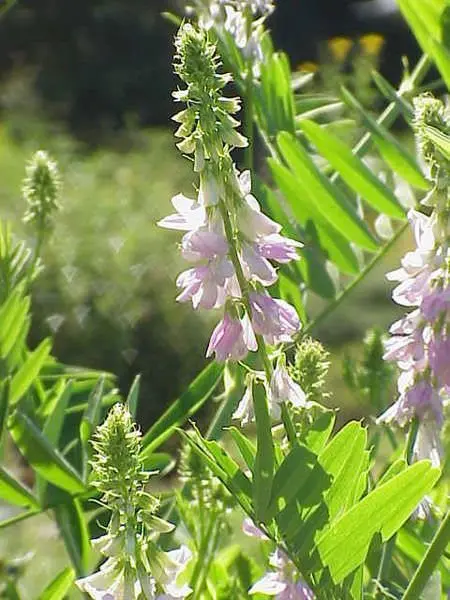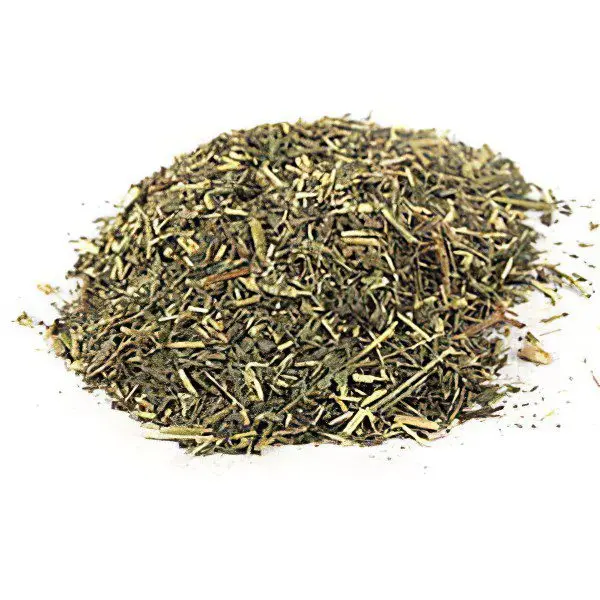Contents
Useful properties and recipes for the use of Galega officinalis
Galega officinalis – a miracle herb

Galega officinalis is a beautiful perennial plant belonging to the legume family. The popular name for this herb is goat’s rue. It received such a name because it is grown as a fodder and very valuable crop. Galega is a very branched and powerful grass, reaching 1 meter in height. It is a plant with pinnate leaves. Its flowers of a bluish or grayish-purple color are collected in brushes, in appearance the flowers look like a bell. The fruit is a legume that contains many seeds and has longitudinal depressions on each side. The flowering of the plant begins in early summer and lasts the entire summer period until early autumn.
Galega can be seen in damp places, pits, near rivers and along the banks of lakes, and this plant is also often found between shrubs. Galega is very widespread throughout Russia.
All parts of the plant are used for medicinal purposes, and this is despite the fact that Galega is a poisonous plant – you just need to know the dosage of taking the drug.
Medicinal properties of Galega officinalis
Medicinal raw materials are leaves, flowers and roots. The infusion prepared from galega has a diuretic, anthelmintic and antibacterial effect on the patient’s body.
Galega lowers blood sugar levels, which is why it is used in diabetes mellitus. The stems and leaves contain carbohydrates, vitamin C, carotene, tannin, as well as tannins and bitter substances. The seeds secrete the alkaloid galegin, which causes pupillary constriction when applied topically. If intravenous pressure is lowered, then the alkaloid will increase it, narrow the blood vessels. In addition to all this, this substance improves the secretion of milk and has a depressing effect on the motor functioning of the intestine.
The use of galega officinalis
Galega preparations have been successfully used in folk medicine for a long time. It is used as a diaphoretic, antihelminthic.
Galega has the best effect if it is used at the initial stage of the disease. Galega is used as a lactogenic agent during the period of feeding in mothers, as it contributes to a better movement of fluid throughout the body, thereby producing more milk.
In addition to lowering blood sugar, galega also increases glucose tolerance, which means that the body will react very quickly if the glucose content in it changes.
From the use of galega in the liver, the content of glycogen increases. Glycogen is the main storage form of glucose for later.
It is no secret to anyone that collecting galega – yes, in general, like any other plant for medicinal purposes – is only necessary in places remote from roads and travel points. The more environmentally friendly the place where the galega is collected, the more healing effect it will have on the body of a sick person.
The galega herb contains the alkaloid peganin, which tones the smooth muscles.
Galega officinalis recipes

A decoction of galega grass. To prepare it, take 2 tablespoons of dried chopped herbs and pour 500 ml of boiling water over it. We put in a water bath, always in an enamel bowl, covered with a lid. After 15 minutes, strain the composition through gauze and bring to the original volume with boiled water. It is necessary to take such a decoction of 70 ml daily before meals. And already, depending on your well-being, you can either reduce, or, conversely, increase a single dose of admission.
Collection of galega grass for diabetes mellitus. It is not difficult to prepare such a collection, for this you need to take 25 grams of galega grass, 25 grams of bean pods, the same amount of dandelion root and nettle leaves. Next, take 200 ml of boiling water and pour 1 tablespoon of the mixture into it, after which we leave it to infuse for 30 minutes. The infusion is drunk 100 ml before meals 2 times a day.
Galega infusion for diabetes. To prepare it, we take 20 grams of chopped dried grass, pour a glass of boiling water and leave to infuse for 2 hours. Next, we filter. This infusion is taken 1 tablespoon three times a day.
Infusion of galega seeds. To prepare it, take 2 teaspoons of seeds and pour 500 ml of boiling water, leave to infuse for 3-4 hours, and then filter. Ready infusion should be drunk 100 ml 3 times a day, half an hour before meals.
Diuretic infusion from galega. You need to take 10 grams of galega seeds and pour 200 ml of boiling water over them. Then we put the composition on the fire for 5 minutes, after which we remove it from the fire and insist for two hours. After straining the finished infusion, it is taken 3 times a day, 1 tablespoon.
Fresh galega juice. We take the galega grass and squeeze the juice from it. Next, dilute 10 grams of fresh juice with 50 ml of water and rinse the throat with this solution. Inside the galega juice should be taken 50 drops, which must be diluted with 100 ml of water. This juice is taken 3 times a day. The same juice can be washed with ulcers and wounds.
Galegi grass – honeysuckle
Galega has long been recognized as the best honey plant. This plant produces as much nectar as sainfoin. Galega blooms along with white acacia, namely in mid-May. Flowering continues for a month. A lot of bees fly around this plant, they collect up to 200 kg of honey from one hectare. After the end of the first flowering, the galega needs to be mowed, for example, for hay, and the next flowering in August lasts until mid-September, so that the bees can prepare well for the winter period. Bees really like to collect honey from galega because it has very large open flowers.
Contraindications to the use of galega
Specialist doctors forbid the use of galega by pregnant women. Others need to strictly observe the dosage of taking drugs from this plant. If there is a violation of the intestines, then the use of galega is not recommended. Hypertension and hypotension are also contraindications to the use of galega. In any case, before using the plant, you should consult a doctor.









